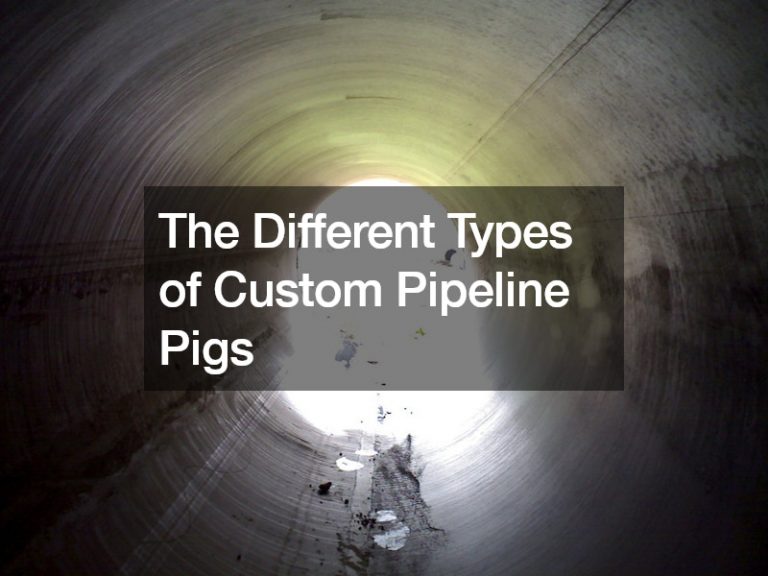Pipelines are integral components of natural gas systems, facilitating the transportation of gas from production sites to consumers. While the focus often lies on processing natural gas, maintaining pipeline integrity is equally crucial. In this article, we delve into the world of pipeline maintenance, specifically exploring the significance of custom pipeline pigs.
Understanding Pigging Operations
Pigging, derived from the squealing sound produced by early devices used to clear pipeline debris, has evolved into a critical maintenance process. Custom pipeline pigs are mechanical devices designed to remove contaminants, deposits, and other obstructions from pipelines.
Beyond cleaning, these pigs serve various functions, including segregating different product qualities within the same pipeline and detecting pipeline damage.
The Working Mechanism
Pigging involves propelling a solid plug, known as a pig, through the pipeline using fluid pumped upstream. This fluid reduces friction between the pig and the pipeline, facilitating smooth movement. The process typically begins with a pig launcher inserting the pig into the pipeline, with a pig receiver removing it at the other end.
Types of Pipeline Pigs
Modern pipeline pigs are primarily made from polyurethane foam, offering durability and flexibility. They are classified based on their intended functions, including utility pigs for cleaning, inline inspection pigs for detecting damage, and gel pigs for optimizing cleaning tasks.
Pipeline pigs come in various classifications and materials, each serving specific purposes in the maintenance and operation of pipelines. Utility pigs are primarily used for cleaning debris and separating dissimilar products, while inline inspection pigs detect leaks and assess pipeline conditions. Gel pigs are used alongside conventional pigs to optimize cleaning tasks, and pigs with brushes or cups perform specialized functions.
The proper selection of pigs depends on factors like pipeline contents, pipe characteristics, and branch connections. Understanding the types of pipeline pigs available ensures efficient and effective maintenance strategies, contributing to the smooth operation of pipelines and reducing the risk of costly disruptions.
Selecting the Right Pig
Choosing the appropriate pig involves considering factors such as the purpose of pigging, the substances present in the pipeline, pipe characteristics, and the pipeline’s layout. Understanding these variables helps operators select pigs tailored to their specific maintenance needs.
Choosing the appropriate pig for pipeline maintenance is crucial for ensuring optimal performance and minimizing operational disruptions. The selection process involves considering various factors such as the purpose of pigging, pipeline contents, pipe characteristics, and branch connections. Understanding the specific requirements of the pipeline system helps determine the type of pig needed for the job.
For instance, the type of substance flowing through the pipeline – whether it’s fluid, solid, or slurry – affects the choice of pig material and design. Pipe characteristics such as diameter, bends, and elevation profile influence pig size and maneuverability. Additionally, factors like branch connections and valve types must be taken into account to ensure the pig can navigate the pipeline without encountering obstacles.
By carefully evaluating these factors and selecting the right pig for the job, pipeline operators can optimize maintenance efforts, extend the lifespan of their infrastructure, and minimize costly downtime.
Optimizing Pigging Frequency
Determining the optimal pigging frequency is crucial for balancing maintenance requirements with operational efficiency. Too frequent pigging can disrupt production schedules and increase operating expenses, while infrequent pigging may lead to pipeline blockages or delayed detection of leaks. Operators often rely on industry experience and thumb rules to establish an appropriate pigging frequency.
Custom pipeline pigs play a vital role in maintaining the integrity and functionality of natural gas pipelines. From removing debris and contaminants to detecting damage and optimizing cleaning tasks, these mechanical devices are indispensable for pipeline maintenance operations.
By understanding pigging operations, selecting the right pigs, and optimizing pigging frequency, operators can ensure the smooth operation of their pipeline systems, minimize downtime, and prevent costly disruptions. As the natural gas industry continues to evolve, custom pipeline pigs will remain essential tools for ensuring the reliability and safety of pipeline infrastructure.
In conclusion, the use of custom pipeline pigs plays a critical role in maintaining the integrity and efficiency of pipeline systems in various industries, including natural gas and petroleum. From removing contaminants and debris to detecting damage and calibrating flow meters, pigs offer versatile solutions for pipeline maintenance and optimization.
By understanding the different types of pigs available, the pigging process, and the factors involved in selecting the right pig for the job, pipeline operators can effectively manage their maintenance operations and ensure the smooth operation of their pipelines. Regular pigging helps prevent blockages, leaks, and other issues that can lead to costly downtime and environmental hazards.
Overall, by following best practices in pigging operations and selecting the appropriate pigs for their pipelines, operators can maximize efficiency, minimize downtime, and ensure the safe and reliable transportation of fluids through their pipeline systems.
.











